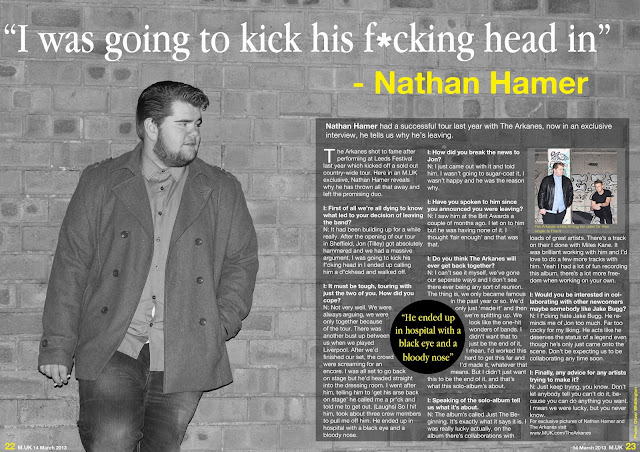Front page:
My first task was very basic as it was my first time using
Photoshop. It is very basic and there is a lot of white space which makes it
look rushed. The colours make the logo hard to read and fonts used are very
basic. The whole thing looks unprofessional and is of a very low standard. I
think my skills have progressed a lot since my first task. The cover of my new
magazine I think looks a lot better, the title stands out and the text fits neatly on the edges of the
cover not covering any of the artist’s face. The main artist is the clear focus
with his name being a lot larger than the rest of the articles. There is use of
different texts which helps place emphasis on different parts of the cover.
There is no white space and overall it gives off a much more professional,
finished feel than the first. This shows that not only have my skills in
Photoshop developed, my understanding and creating of magazines have developed.
Contents Page:
The contents page from the first task is very basic. There
is only use of on image which takes up the whole page, which makes the text on
top of it hard to read. Similar to the cover in the first task, it is very
basic and lacks simple details that would feature on a contents page such as a
website or a contact number. My new contents page looks a lot more
professional. There is a band index,
which was inspired from the NME context page. The text on the images are easy
to read and the layout is a lot clearer, giving it a much more professional
look than the first task which looks rushed, unprofessional and unfinished.





















































